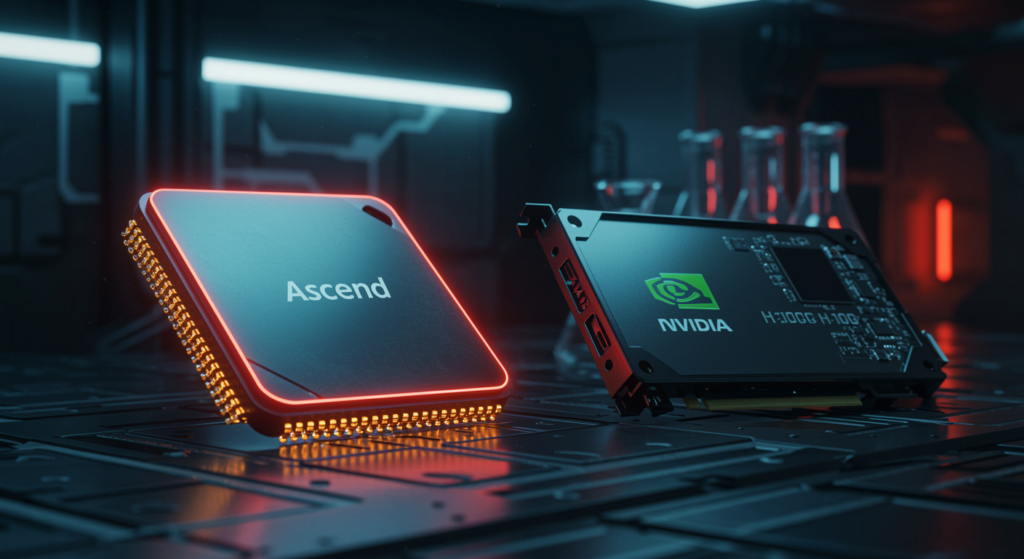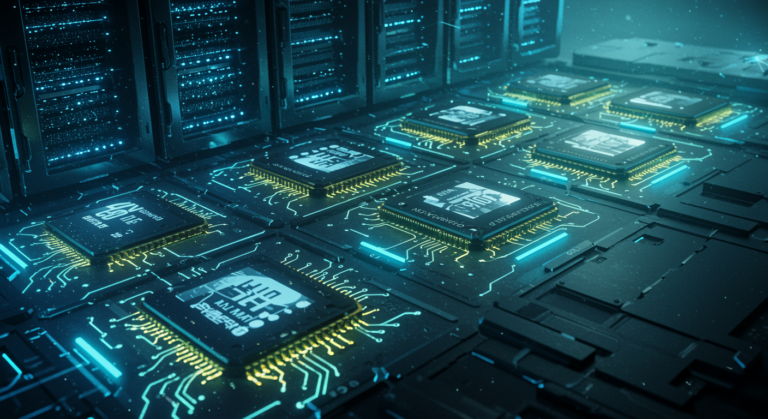
Huawei AI Chip Challenges Nvidia in Testing Phase
Introduction
Imagine a world where tech giants from different corners of the globe are locked in a high-stakes race for AI dominance—it’s happening right now. Huawei, the Chinese powerhouse, is stepping up with its latest innovation, the Ascend 910D, directly challenging Nvidia’s stronghold in AI hardware. As demand for powerful AI training systems surges amid growing US-China tensions, this Huawei AI chip could be a game-changer, offering new options for businesses and researchers alike.
The Ambition Behind Huawei’s AI Chip Innovation
Huawei is gearing up to test its Ascend 910D, a bold move in the evolving landscape of AI technology. By distributing sample chips to top Chinese firms in AI and telecom, they’re setting the stage for evaluations starting late May. This isn’t just about hardware; it’s about proving that a Huawei AI chip can deliver on promises of superior performance for everything from AI training to real-time inference.
Have you ever wondered what drives companies to push boundaries in tech? For Huawei, it’s a mix of market needs and self-reliance. Early tests will reveal if this chip lives up to the hype, potentially reshaping how we approach large-scale AI projects.
Key Features That Define the Huawei AI Chip
The Ascend 910D isn’t your average processor; it’s engineered to outpace Nvidia’s H100, which has been the go-to for AI tasks since 2022. Building on the successes of earlier models like the 910B and 910C, which are already in widespread use, this chip optimizes for seamless integration into data centers and cloud systems such as the CloudMatrix 384.
- It boasts enhanced computational power, making it ideal for complex AI workloads.
- Energy efficiency is a standout, helping reduce costs in high-demand environments.
- Its design supports scalable setups, which could be a lifeline for firms facing supply chain disruptions.
If you’re in tech, think about how a Huawei AI chip like this could streamline your operations—faster processing without the usual bottlenecks.
Head-to-Head: Huawei AI Chip Versus Nvidia H100
Let’s break down the competition. The Ascend 910D and Nvidia’s H100 represent two worlds colliding: one from China, pushing for innovation under constraints, and the other from the US, holding the current crown.
| Feature | Huawei Ascend 910D | Nvidia H100 |
|---|---|---|
| Origin | China (Huawei) | USA (Nvidia) |
| Target Market | Chinese AI firms and global telecoms | Worldwide enterprises and research institutions |
| Key Use Case | AI training, inference, and cloud setups | Advanced model development and data center operations |
| Performance | Aims to exceed H100 benchmarks | Proven leader with widespread adoption |
| Availability | In testing, with shipments to partners in May 2025 | Readily available, though export-restricted to some regions |
What makes the Huawei AI chip intriguing is its potential to offer similar power at a fraction of the geopolitical risk. For instance, if your company relies on AI for cloud services, switching to Huawei could mean more stable access amid trade tensions.
Geopolitical Tensions Fueling the Huawei AI Chip Race
Behind the scenes, US export controls are ramping up the pressure. These restrictions have blocked Nvidia’s advanced chips from reaching China, prompting a surge in domestic alternatives like the Ascend 910D. It’s not just about competition; it’s about survival in a divided tech world.
- The US has limited exports of critical components, affecting everything from memory to full chips.
- Nvidia’s facing financial hits from unsold inventory due to these bans.
- Huawei is positioning its AI chip as a reliable option, fostering greater independence for Chinese tech.
Ever thought about how global politics shapes your tech choices? This Huawei AI chip story is a prime example, showing how innovation can thrive even under constraints.
The Surge of Chinese Innovation in AI Hardware
China’s not sitting idle; it’s rapidly becoming a force in AI chips, with government backing accelerating the pace. Companies like Huawei are leading the charge, turning challenges into opportunities for growth.
This momentum is evident in the widespread use of earlier Ascend chips by giants like ByteDance, and through hefty investments in R&D. Plus, systems like CloudMatrix 384 allow for massive chip interconnections, scaling AI computing like never before.
Other Players in the Chinese AI Chip Arena
Beyond Huawei, firms like Baidu with their Kunlun series and Alibaba are adding to the excitement. Then there are the “Six Little Tigers,” innovation hubs driving even more competition. It’s creating a vibrant ecosystem where a Huawei AI chip is just one piece of a larger puzzle.
For tech enthusiasts, this means more options and potentially lower costs. Could this diversity spark global advancements? Absolutely, as it encourages cross-border ideas.
What Makes the Huawei AI Chip Stand Out?
The real edge of the Ascend 910D lies in its ecosystem approach, not just raw power. Huawei focuses on high-throughput systems that link multiple chips, delivering faster results for cloud AI applications.
Exploring CloudMatrix 384 and Beyond
- Launched in April 2025, it connects hundreds of chips for seamless performance.
- Prioritizing efficiency, it could cut energy use in data centers by significant margins.
- This setup offers an alternative path for AI deployments, especially where US tech is off-limits.
If you’re building AI models, imagine the possibilities with a Huawei AI chip at the core—quicker iterations and more sustainable operations.
Market Shifts and the Future of Huawei’s AI Chip
As the Ascend 910D moves into testing, it’s poised to shake up the AI hardware market. Success could mean more choices for everyone, from startups to global corporations.
Opportunities and Hurdles on the Horizon
- Chinese companies might reduce their dependence on foreign tech, boosting local economies.
- Ongoing restrictions could inspire even more breakthroughs.
- Worldwide, we might see a boom in diverse chip designs, fostering innovation.
- But real-world tests will be the true test—can it handle intensive AI tasks reliably?
What are your thoughts on this evolving landscape? If you’re in AI development, keeping an eye on the Huawei AI chip could open doors to new strategies.
Wrapping Up: The Bigger Picture of Huawei’s AI Chip
In the end, the Ascend 910D represents China’s growing prowess in AI, blending ambition with practical engineering. As it undergoes field tests, the outcomes will influence not just markets, but global tech dynamics. For readers like you, this is an invitation to stay engaged—whether you’re exploring AI for business or just out of curiosity.
Ready to dive deeper? Share your insights in the comments, check out related articles on our site, or spread the word to spark more discussions.
References
- Huawei to Test AI Chip Aiming to Rival Nvidia. CoinTelegraph. Source
- China is Rapidly Becoming a Leading Innovator in Advanced Industries. ITIF. Source
- 2025 Tech Trends Report. FTSG. Source
- Other relevant insights from YouTube discussion on AI chips.
- AI Content Generation for SEO. Black Hat World.
- AI Distilled Learning. PacktPub.
- Generative AI Report. IndiaAI.
- Best of AI Articles Compilation.
Huawei AI chip, Ascend 910D, Nvidia H100, Chinese AI innovation, AI hardware, Huawei vs Nvidia, AI chip competition, global AI race, Chinese tech advancements, AI processor alternatives







